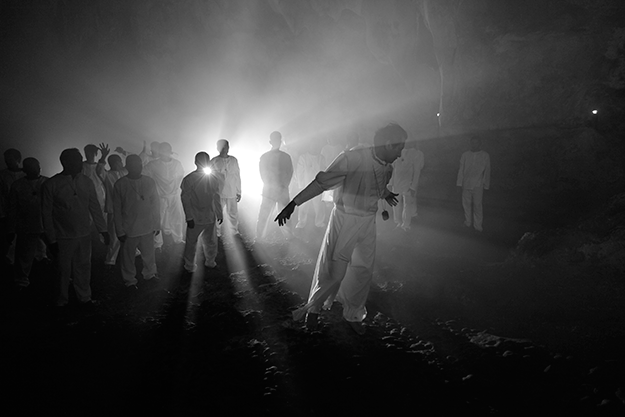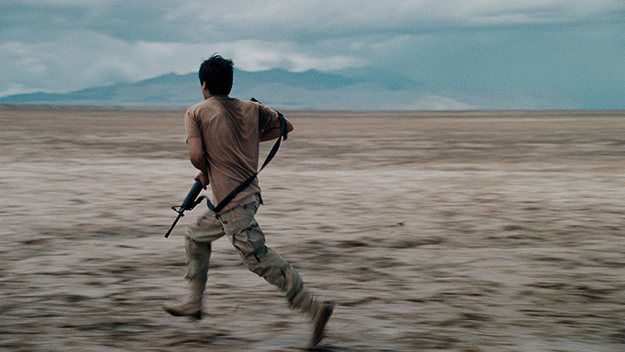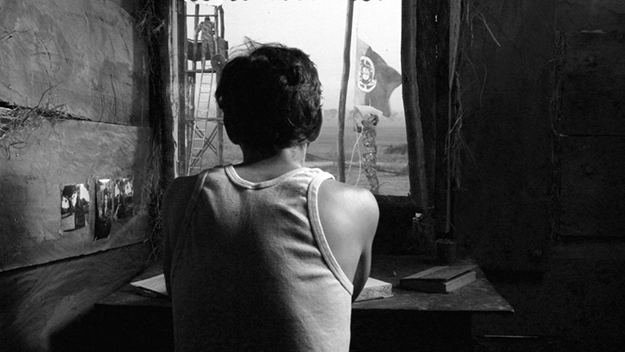Films of the Week: Two from Berlin

A Lullaby to the Sorrowful Mystery
I wouldn’t say the Berlin competition was outstanding this year, but at least it was healthy. There was little cause to shake your head and tut-tut over the mystery of the Berlin malaise, as we’ve often found ourselves doing in recent years. Perhaps the inclusion of an eight-hour film by Lav Diaz was meant to signal to the world that Berlin meant business, or maybe it was just intended to offset the hyper-traditional stodginess of the earnest “quality titles” contained in this year’s list—Michael Grandage’s dour literary anecdote Genius and Vincent Perez’s wartime saga Alone in Berlin, a film that probably wouldn’t have been that much better even if it hadn’t been made with the actors speaking English in heavy German accents.
Sometimes it almost seems as if such prestige follies are included as foils to bring glitter by contrast to some of the unheralded, undemonstrative glories of the competition section. That’s good for films like Gianfranco Rosi’s Fire at Sea, a documentary about the refugee situation on Lampedusa—which I didn’t see, but which was very enthusiastically received. It’s also good for a title I liked a lot but which, judging from critics’ responses, seems at this point to be one of the unloved orphans of the competition. I was particularly keen to see Soy Nero because one of the high points of (if I remember right) my first Berlinale in 2006 was It’s Winter, a feature by Iranian-born, U.K.-educated Rafi Pitts. Soy Nero is his first U.S. feature (although he previously made a documentary about Abel Ferrara), and it’s a very odd one, entirely different in mood from either It’s Winter or follow-up The Hunter (10).
Soy Nero is inspired by the phenomenon of young Mexicans whose only option for securing residence in the United States—that is, for not being summarily shoved back across the border, as happens to Pitts’s hero—is enlistment in the U.S. Army, a high-risk strategy if ever there was one. His hero, Nero Maldonado (Johnny Ortiz), is first seen trying to get back into the country and stay there, and manages to make it north by hitching a ride with an agitated, conspiracy-spouting loudmouth (Michael Harney) who has a small girl in tow, dressed as a bee. This episode abruptly over, Nero makes it to a fancy L.A. residence, where his brother Jesus (Ian Casselberry) appears to be living the high life. But does Nero really believe that this is Jesus’s own domain? Whether or not he does, the strangeness of the situation—with Nero drifting through the vast suites of rooms in a dressing gown like Hugh Hefner’s—adds to the generally dreamlike tone of the film.

Soy Nero
Later—in super-abrupt fashion, maintaining the episodic, Candide-like nature of our hero’s journeyings—the action jumps to the no-man’s-land of a desert war zone. That’s where Nero is stationed, now using his brother’s ID, and pronouncing his name “Jesus” in the English style. A U.S. soldier, he himself now protects a border, of a different kind. Heat haze and the testy automatism of soldier badinage—two black officers arguing about East and West Coast rap traditions—suggest a certain amount of modern war film cliché, yet that over-familiarity itself reinforces the sense of claustrophobic enclosure that dominates the film wherever Nero gets to on his travels.
The tone of the entire movie increasingly comes to suggest some sort of political version of a Beckett play, and this final desert episode, involving an armored expert sent to de-bomb a suspect car, suggests something like a minimalist remake of The Hurt Locker, perhaps directed by Jon Jost. In the end, by the last ironic twist of Nero’s trajectory, it’s clear that Soy Nero—although it’s inspired by real situations—has next to nothing to do with realism, more to do with the alienation endured by the hero of a picaresque journey through a distorted reality. It has something of the same anti-epic logic as Céline’s Journey to the End of the Night, in which the protagonist, after all he’s been through, ends up simply in a terminally bathetic state of ending up. In any case, there’s more than enough fuel in Pitts’s film to work Donald Trump into terminal apoplexy.
This was a good competition for black-and-white cinematography: Lav Diaz’s A Lullaby to the Sorrowful Mystery; the (perhaps too artfully drab) color bleached to near monochrome of Tomasz Wasilewski’s United States of Love, a drama of early-’90s Poland shot by Eastern European star DP Oleg Mutu; and then the film which struck me as the competition’s great find, Ivo M. Ferreira’s Letters From War. I have to admit that the visuals of this Portuguese title offered some of the same textural pleasures as Miguel Gomes’s Tabu, itself a Berlinale highlight not so long ago. But while both films look back in black and white to Portugal’s colonial past in Africa, Ferreira’s film is entirely different in approach, and altogether more soberly realistic. It’s based on the letters of António Lobo Antunes, later to become a well-known novelist, but at the time depicted here (1971, to be precise) an army lieutenant and regimental doctor stationed in Angola, as Portugal tries desperately to hold on to this colony.

Letters From War
António, played by Miguel Nunes, writes letters home to his wife Maria José back home in Portugal; she’s sometimes glimpsed in their book-filled apartment. Interestingly, Ferreira chooses to have the letters read in voice-over mainly by Maria José (Margarida Vila-Nova), although we sometimes hear António’s voice too. The voices run more or less continually over the visuals, sometimes matching what we see, sometimes in greater or lesser counterpoint to it. What’s particularly disorienting is that we mainly hear Maria José’s voice, as if it’s she, not António, who is witnessing these scenes—or as if she’s creating them in her mind’s eye from his words.
Ferreira’s film is one of a number of stylized Portuguese dismantlings of the country’s colonial past (the more playfully done Tabu being an obvious recent example, Manoel de Oliveira’s No, or the Vain Glory of Command being another, considerably odder one). It represents an astonishing feat of visual evocation, its scenes of army life beginning with the languid boredom of the doctor’s ocean passage to his posting, through the nights of earnest discussion with a disenchanted, left-inclined commanding office, to summary executions of MPLA militants. You sense the minuteness of the reconstructions by production designer Nuno Mello as the film moves from scene to scene, every shot crammed with detail, making for a formidable demand on our ability to absorb it all—and nothing ever seems merely decorative, or merely historically correct. João Ribeiro’s high-contrast photography is phenomenally rich in texture, as in an extraordinary shot in which I suddenly felt myself mesmerized by the scratched surface of a jeep window. It’s a remarkably beautiful film, sometimes suggestive of what Terrence Malick did with nature and the field of combat in The Thin Red Line, but this isn’t a film—despite arguments I’ve heard here—that either aestheticizes war or preserves colonial conflict in aspic as an element of a distant past. The beauty of Letters, and of the letters themselves, are part and parcel of the intense presentness with which the film imbues Antunes’s experience—and which, in chorus with his words, makes the film’s very tangible African reality a manifestly political one too.
Jonathan Romney is a contributing editor to FILM COMMENT and writes its Film of the Week column. He is a member of the London Film Critics Circle.







